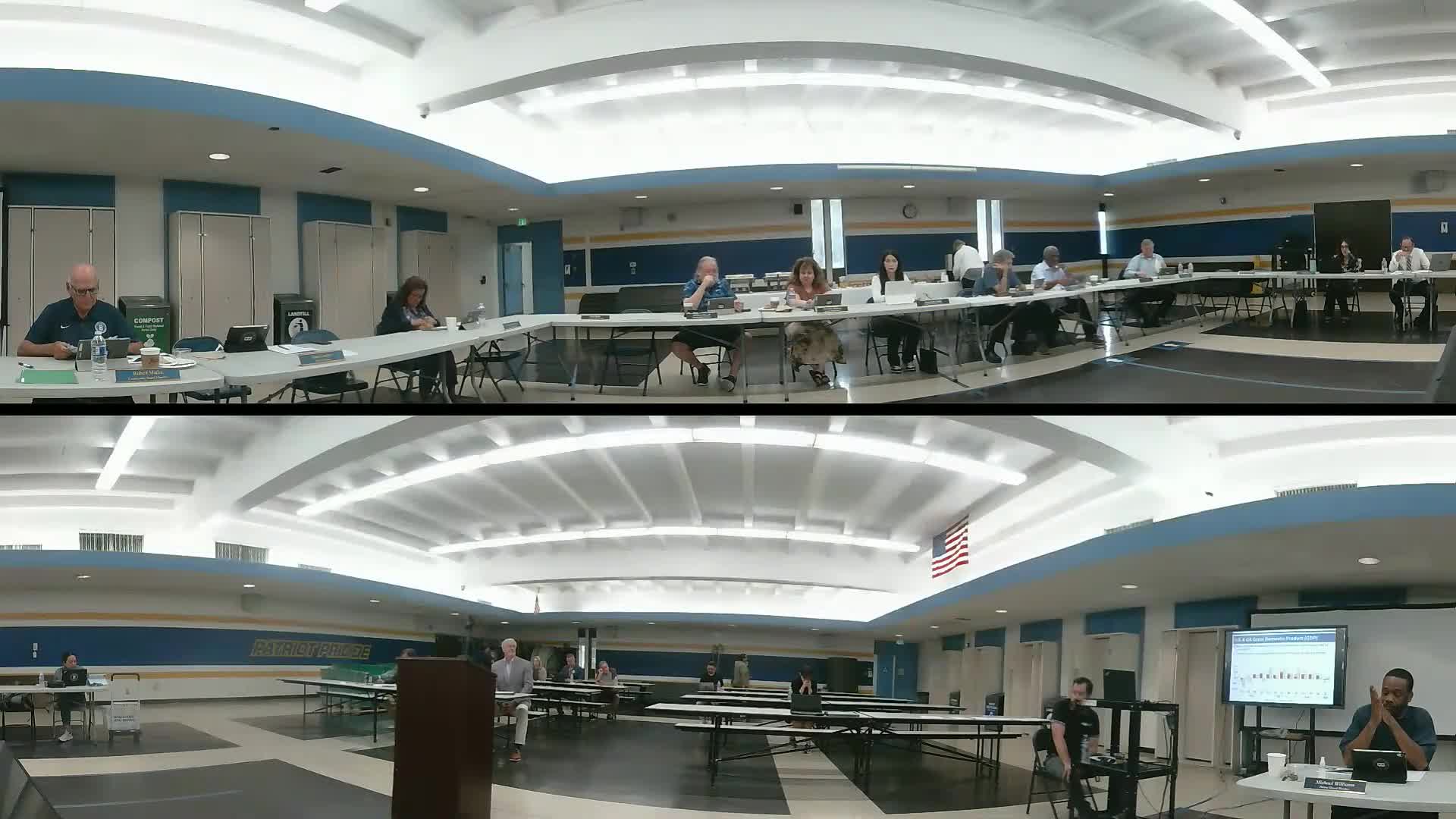Analysts Warn of Risks to California's Economy Amidst Rising Unemployment and Housing Challenges
July 27, 2025 | Birmingham Community Charter High District, School Districts, California
This article was created by AI summarizing key points discussed. AI makes mistakes, so for full details and context, please refer to the video of the full meeting. Please report any errors so we can fix them. Report an error »

During the Birmingham Community Charter High District's regular board meeting on July 26, 2025, significant discussions centered around the economic outlook for California and its implications for the community. The meeting highlighted concerns regarding consumer spending, debt delinquency, and the overall economic climate, which is showing signs of tightening but is not expected to lead to a national recession.
Economists presented projections indicating that while the unemployment rate is anticipated to peak in 2026, California's unemployment is expected to remain higher than the national average. This trend raises concerns about the state's economic resilience, particularly as the gap between California's unemployment rate and the national rate is projected to widen.
Inflation and interest rates were also key topics. The Federal Reserve is closely monitoring the personal consumption expenditure (PCE) as a measure for potential interest rate adjustments, currently targeting a 2% PCE while the current rate sits at 2.3%. With the federal fund interest rate at 4.3%, no immediate reductions are anticipated, which could further strain consumer spending and borrowing.
The meeting also addressed the challenges facing California's housing market, a critical component of the state's economy. With building permits at a low and high-interest rates impacting affordability, the housing market is experiencing a downturn. The median home price in California is now just over $900,000, reflecting a slight decrease from the previous year, while sales of single-family homes have dropped by 4%. This stagnation in the housing market could lead to reduced property tax revenues, affecting local funding for schools and services.
Additionally, the board discussed the implications of immigration policies on the labor force, which are contributing to a reduction in available workers. Despite these challenges, there are signs that California's population may stabilize or even grow slightly in the coming years, as the trend of people leaving the state has moderated.
In conclusion, the discussions at the board meeting underscored the interconnectedness of economic factors affecting California, from consumer behavior to housing market dynamics. As the board navigates these challenges, the implications for local education funding and community resources remain a critical concern. The next steps will involve closely monitoring these economic indicators and their potential impact on the district and its stakeholders.
Economists presented projections indicating that while the unemployment rate is anticipated to peak in 2026, California's unemployment is expected to remain higher than the national average. This trend raises concerns about the state's economic resilience, particularly as the gap between California's unemployment rate and the national rate is projected to widen.
Inflation and interest rates were also key topics. The Federal Reserve is closely monitoring the personal consumption expenditure (PCE) as a measure for potential interest rate adjustments, currently targeting a 2% PCE while the current rate sits at 2.3%. With the federal fund interest rate at 4.3%, no immediate reductions are anticipated, which could further strain consumer spending and borrowing.
The meeting also addressed the challenges facing California's housing market, a critical component of the state's economy. With building permits at a low and high-interest rates impacting affordability, the housing market is experiencing a downturn. The median home price in California is now just over $900,000, reflecting a slight decrease from the previous year, while sales of single-family homes have dropped by 4%. This stagnation in the housing market could lead to reduced property tax revenues, affecting local funding for schools and services.
Additionally, the board discussed the implications of immigration policies on the labor force, which are contributing to a reduction in available workers. Despite these challenges, there are signs that California's population may stabilize or even grow slightly in the coming years, as the trend of people leaving the state has moderated.
In conclusion, the discussions at the board meeting underscored the interconnectedness of economic factors affecting California, from consumer behavior to housing market dynamics. As the board navigates these challenges, the implications for local education funding and community resources remain a critical concern. The next steps will involve closely monitoring these economic indicators and their potential impact on the district and its stakeholders.
View full meeting
This article is based on a recent meeting—watch the full video and explore the complete transcript for deeper insights into the discussion.
View full meeting
